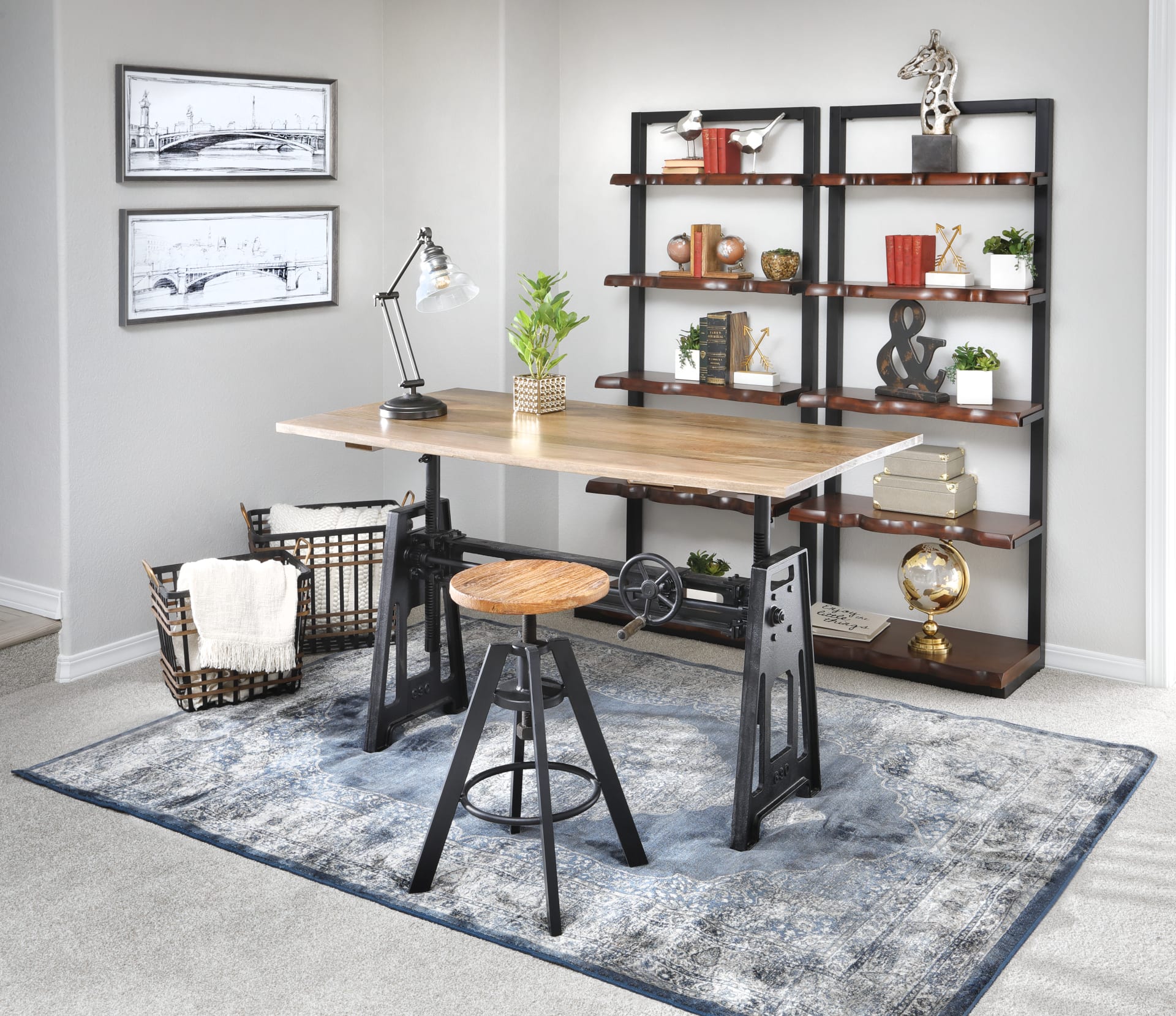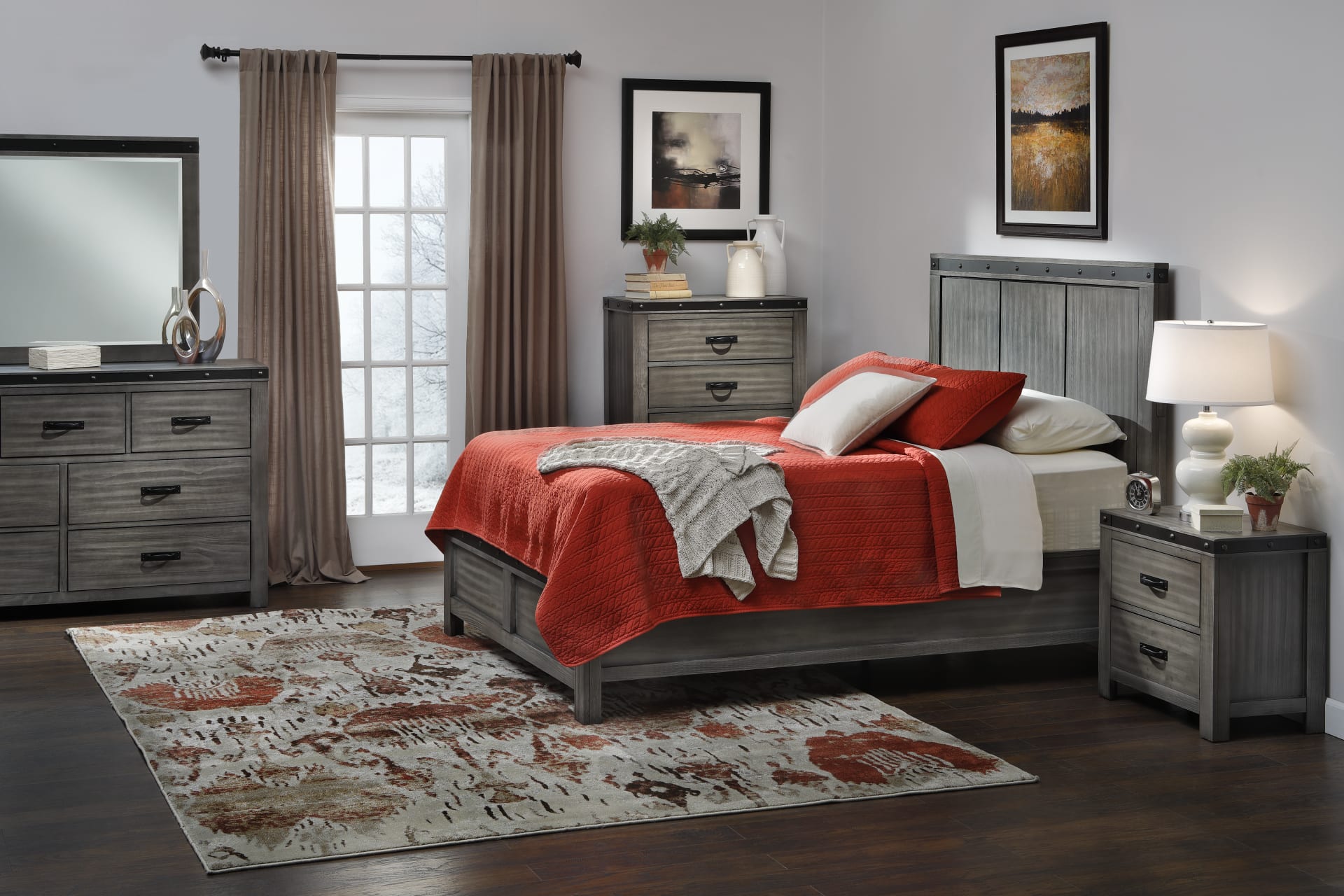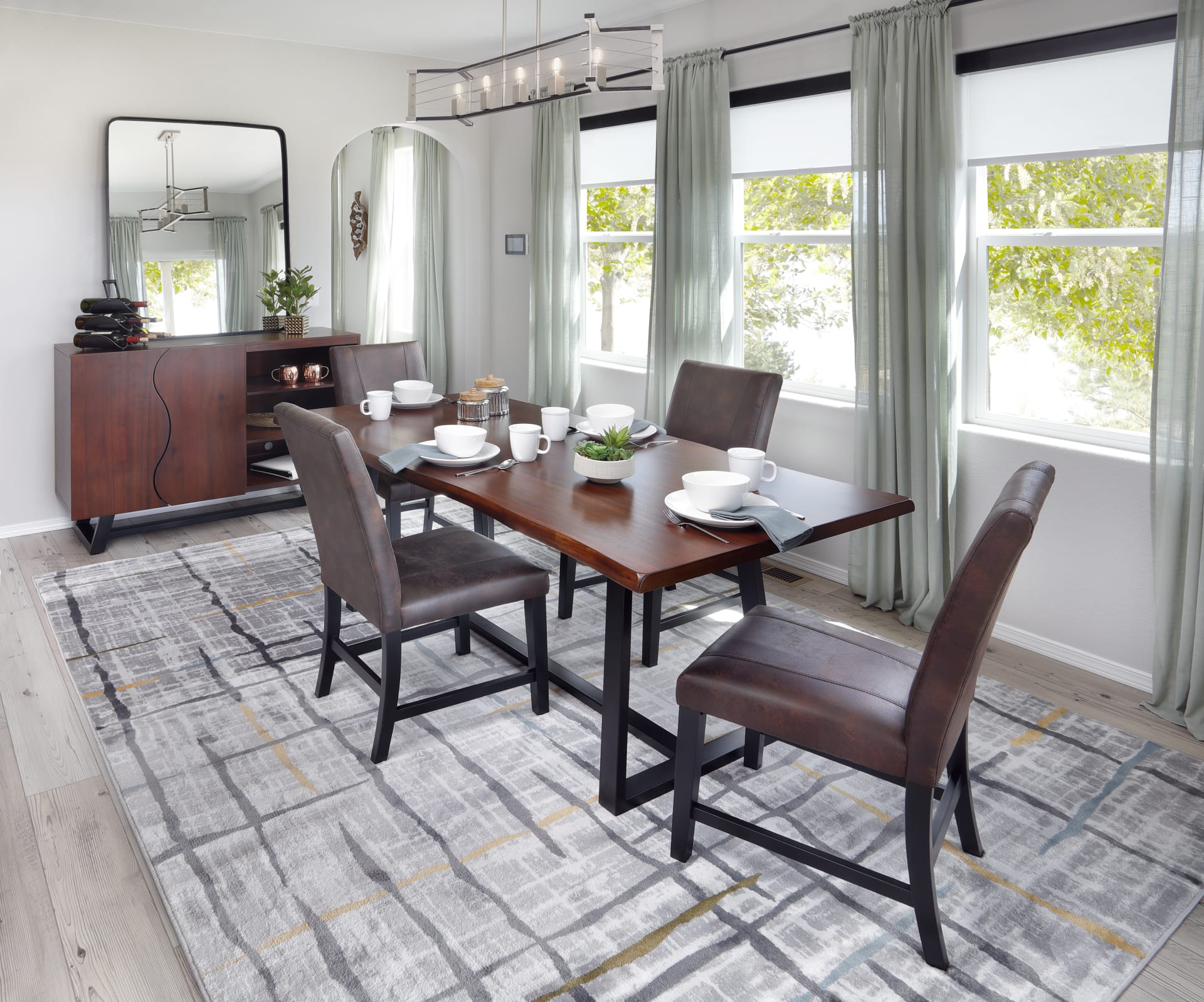Style Guide: Industrial Style for Modern Living
Born from the gritty charm of Industrial-Era factories and warehouses, industrial style has become a hallmark of contemporary design. It’s bold, raw, and unapologetically utilitarian, celebrating the beauty of exposed architecture and building materials.
Whether you’re transforming an urban loft or adding industrial flair to a suburban home, this guide will help you master the art of industrial interior design.
What Is Industrial Style?

Pictured above, the Crank Adjustable Table
Industrial style furniture and decor draw inspiration from the factories of the early 20th century, where exposed structural elements like metal, brick, and concrete were integral to the space. This aesthetic translates into furniture that celebrates exposed metal, concrete, and other building materials in both structural and decorative elements. Think steel-framed furniture, concrete tabletops, exposed ductwork, and eye-catching lamps with Edison bulbs.
Here’s what defines industrial interiors:
- Raw Materials: Metal and concrete take center stage in industrial design. Steel-framed tables, concrete countertops, and glass accents embody the utilitarian spirit of this style.
- Exposed Architecture: Visible beams, brick walls, pipes, and ductwork are key elements that give industrial spaces their rugged appeal.
- Neutral Color Palette: Shades of gray, black, white, and earthy brick tones dominate the industrial aesthetic, often complemented by metallic finishes.
- Statement Lighting: Factory-inspired lighting such as metal pendants, Edison bulbs in caged fixtures, or pulley-style lamps add functional charm to the space.
- Minimalism: Industrial interiors prioritize simplicity and functionality over decorative excess.
Achieving the Industrial Style: A Step-by-Step Guide
1. Set the Foundation
To create an authentic industrial space, start with the basics—your walls, floors, and architectural elements.
- Highlight Architectural Elements: Exposed brick walls, concrete floors, or steel beams are staples of industrial design. If your space lacks these features, consider adding faux brick panels or concrete-look finishes to mimic the effect.
- Neutral Backdrop: Use soft gray, off-white, or earthy brick tones on walls to create a clean canvas for your industrial decor.
2. Furnishing an Industrial Space
Industrial furniture is all about showcasing building materials in their raw state, but if you use too many industrial pieces, things can quickly feel cold and uninviting. Here’s how to furnish the space:
- Functional Pieces: Opt for furniture with clean lines and sturdy construction—steel-legged tables, metal-framed chairs, or concrete-topped coffee tables are quintessential choices.
- Raw and Unfinished Surfaces: Industrial furniture often features raw, unrefined materials like exposed metal with visible welds or concrete with a matte texture.
- Mix Materials: Combine metal or concrete with other materials for a cohesive look that feels true to industrial roots. For example, a coffee table with a reclaimed wood top and metal legs is a classic industrial look.
- Add Warmth with Fabrics: While fabrics aren’t central to industrial design, incorporating soft textures through rugs or throw pillows can prevent the space from feeling too cold or stark.

Pictured above, the Gunsmoke Bedroom Set
3. The Lighting Choices
Lighting is a defining feature of industrial interiors:
- Industrial Fixtures: Choose lighting pieces that highlight their mechanical origins—metal pendants with aged finishes or Edison bulbs in caged sconces are perfect examples.
- Functional Design: Adjustable sconces or pulley-style lamps enhance both practicality and aesthetic appeal in an industrial space.
4. Incorporate Vintage Decor
Vintage furniture and accents can add depth and personality to your industrial space:
- Factory-Inspired Wall Art:Decorate with vintage factory signs, oversized clocks, or old blueprints for historical charm.
- Repurposed Art: Transform gears, machinery parts, or old vehicles into unique art pieces for added authenticity.
5. Final Touches
Bring it all together with carefully chosen accents:
- Metal Details: Black metal frames or polished steel fixtures provide contrast while reinforcing the industrial vibe.
- Greenery: Introduce greenery sparingly—potted plants can soften the ruggedness without detracting from the overall aesthetic.

Pictured above, the Boundary Dining Table and Boundary Server
Pro Tips for Styling Your Industrial Space
- Embrace Imperfections: Let materials like steel and concrete show their natural wear—it’s part of what makes industrial design feel authentic and lived-in.
- Balance Old & New: Pair vintage finds with modern pieces for a dynamic look that feels fresh yet grounded.
- Keep It Minimal: Avoid clutter by focusing on functional decor that complements your space rather than overwhelming it. Choose a few statement pieces to make a lasting impression.
- Play with Scale: Oversized elements like large pendant lights or massive wall art can make a bold statement in an industrial interior.
Why Industrial Style Works
Industrial style is more than just an aesthetic—it’s a celebration of simplicity and functionality rooted in history but adaptable to modern living. By embracing raw materials like metal and concrete alongside thoughtful design choices, you can create a space that feels effortlessly chic yet undeniably practical.
So go ahead—add that steel-framed mirror or concrete coffee table—and let your creativity shine through the rugged charm of industrial design!